
FOR many centuries, the theory held that, if some part of a plant resembled a human organ, then that plant could be used to treat the organ it resembled. At the heart of folk remedy and herbalism, this notion was nurtured throughout the Classical world by respected medical scribes, as far distant as Dioscorides and Pliny the Elder. It gained theological credence in medieval times and, for a while, was central to Western culture—it was known as the doctrine of signatures.
The 16th-century Swiss physician Paracelsus declared that ‘Nature marks each growth according to its curative benefit’ and German religious mystic Jacob Boehme travelled a similar course with Signature Rerum (The Signature of All Things, 1621), which is said to have influenced Newton and Nietzsche, among others. It resurfaced as recently as 2006, in the work of American author Elizabeth Gilbert, whose bestselling Eat, Pray, Love was made into a film in 2010.
For want of a better explanation, medieval medicine embraced the notion that the appearance of plants was a sign from the Almighty. Respected 17th-century English botanist William Coles wrote of herbs in Adam in Eden, or Nature’s Paradise, that ‘the Mercy of God... hath not only stamped upon them a distinct forme but hath also given them particular signatures whereby a man may read the use of them’.
Among his propositions was the claim that, because the bunched flesh inside the walnut resembled the human brain, it offered treatment for headaches. He also believed that, as holes in the leaves of St John’s wort (Hypericum perforatum) were rather like the pores in the human skin, the plant— also known as amber, amber touch-and-heal, demon chaser, goatweed and hardhay —was ‘profitable for all hurt and wounds that can happen thereunto’.
Diese Geschichte stammt aus der September 18, 2019-Ausgabe von Country Life UK.
Starten Sie Ihre 7-tägige kostenlose Testversion von Magzter GOLD, um auf Tausende kuratierte Premium-Storys sowie über 8.000 Zeitschriften und Zeitungen zuzugreifen.
Bereits Abonnent ? Anmelden
Diese Geschichte stammt aus der September 18, 2019-Ausgabe von Country Life UK.
Starten Sie Ihre 7-tägige kostenlose Testversion von Magzter GOLD, um auf Tausende kuratierte Premium-Storys sowie über 8.000 Zeitschriften und Zeitungen zuzugreifen.
Bereits Abonnent? Anmelden
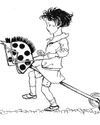
Give it some stick
Galloping through the imagination, competitive hobby-horsing is a gymnastic sport on the rise in Britain, discovers Sybilla Hart
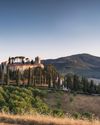
Paper escapes
Steven King selects his best travel books of 2024
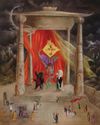
For love, not money
This year may have marked the end of brag-art’, bought merely to show off one’s wealth. It’s time for a return to looking for connoisseurship, beauty and taste

Mary I: more bruised than bloody
Cast as a sanguinary tyrant, our first Queen Regnant may not deserve her brutal reputation, believes Geoffrey Munn

A love supreme
Art brought together 19th-century Norwich couple Joseph and Emily Stannard, who shared a passion for painting, but their destiny would be dramatically different
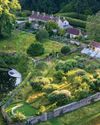
Private views
One of the best ways-often the only way-to visit the finest privately owned gardens in the country is by joining an exclusive tour. Non Morris does exactly that
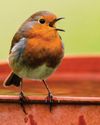
Shhhhhh...
THERE is great delight to be had poring over the front pages of COUNTRY LIFE each week, dreaming of what life would be like in a Scottish castle (so reasonably priced, but do bear in mind the midges) or a townhouse in London’s Eaton Square (worth a king’s ransom, but, oh dear, the traffic) or perhaps that cottage in the Cotswolds (if you don’t mind standing next to Hollywood A-listers in the queue at Daylesford). The estate agent’s particulars will give you details of acreage, proximity to schools and railway stations, but never—no, never—an indication of noise levels.
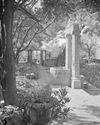
Mission impossible
Rubble and ruin were all that remained of the early-19th-century Villa Frere and its gardens, planted by the English diplomat John Hookham Frere, until a group of dedicated volunteers came to its rescue. Josephine Tyndale-Biscoe tells the story

When a perfect storm hits
Weather, wars, elections and financial uncertainty all conspired against high-end house sales this year, but there were still some spectacular deals

Give the dog a bone
Man's best friend still needs to eat like its Lupus forebears, believes Jonathan Self, when it's not guarding food, greeting us or destroying our upholstery, of course